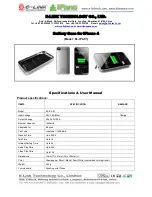
Issue 2 06/2005
COMPANY CONFIDENTIAL
25
Copyright © 2005 Nokia. All Rights Reserved.
RH-53/54
8-System Module
Nokia Customer Care
Microphone
The acoustical design is copied from Nokia 7210 with some modifications. The microphone
boot is a separate component placed next to the bottom connector.
The electrical Microphone design is a differential bias circuit, driven directly from the MICB1
bias output with external RC-filters.
The RC filter (220
Ω
, 4.7
µ
F) is scaled to provide damping at 217 Hz.
The microphone bias is controlled in the 8 bit AudioBiasR register. The figure below shows the
electrical interface.
Figure 6:Microphone interface
■
Vibra
Introduction
Vibra is a small cylindrical DC motor with a
∅
4.0-mm in diameter that generating vibration by
rotating an un-balanced mass (counter weight) with radius of R=2.5-mm when the applied volt-
age is on.
The vibration signal will be used as a silent alert call and also as a noticeable shock in gaming.
Acoustic design
The vibra is placed in the top of the phone when it is fold/closed but it placed under the display
when it is unfold.
The vibra is electrically connected to the flexfilm by spring contacts.
The vibra is controlled from the UEMK by a PWM (Pulse Wide Modulated) square wave signal.
The nominal rated voltage for the vibra is approximately about 1.3 volts and the nominal battery
voltage is about 3.6 volts.
UEM
1k
1k
MIC+
MIC-
4.7uF
MIC1N
MIC1P
MICB1
220
2k2
2k2
1n
1n
MICBCAP
1u
1n
22
k
2*33n
Placed near
UEM
Placed near
bottom
connector
2k2
2k2
10n
10n
















































